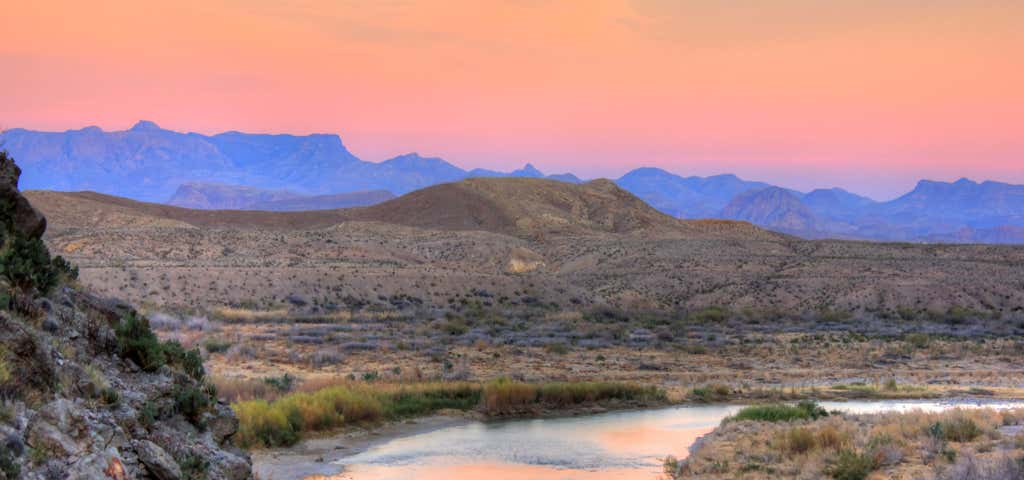The Rio Grande ( or ; , or simply Río Bravo) is one of the principal rivers in the southwest United States and northern Mexico (the other being the Colorado River). The Rio Grande rises in south-central Colorado in the United States and flows to the Gulf of Mexico, passing through three U.S. states and four Mexican states. Its total length was in the late 1980s, though course shifts occasionally result in length changes. Depending on how it is measured, the Rio Grande is the fourth- or fifth-longest river system in North America. The lower of the Rio Grande, from El Paso–Juárez to Brownsville–Matamoros, form a significant portion of the Mexico–United States border. The Rio Grande's watershed, while the fifth largest in North America at , is mostly semi-arid or desert, and the natural discharge of the river is quite low for a river of its length. However, the river is prone to heavy flooding from both spring snowmelt and summer monsoon storms. The Rio Grande is often the only source of water for many miles around the desert valleys and canyons through which it flows, supporting a rich riparian zone in its floodplain. Today, the Rio Grande is an important source for irrigation and drinking water for the 14 million people who live along the river and its tributaries, especially in the heavily populated Lower Rio Grande Valley along the international border between Texas and Tamaulipas – as a consequence, the volume of its flow that reaches its delta and the sea has been greatly reduced over the past century. Inhabited as early as 13,000 years ago by Paleo-Indians, the Rio Grande basin has been home to a diverse array of Native American groups, including the Puebloans of central New Mexico. The first contact between indigenous people and Europeans occurred in the 1500s with the arrival of Spanish explorers. In the 1600s, the region was settled by the Spanish, leading to brutal conflicts with Native Americans, before becoming part of Mexico after its independence from Spain in 1821. The Texas Revolution in 1836 preceded the Mexican–American War which resulted in the northern Rio Grande basin becoming part of the United States and the Rio Grande being established as the present international border. Throughout the 19th century, the Rio Grande country was considered one of the most lawless and remote parts of the American frontier. However, by the late 1800s the population of settlers along the Rio Grande had greatly increased on both sides of the border, causing conflict of water rights between the US and Mexico. Treaties signed in 1906 and 1944 divided up the Rio Grande between the United States and Mexico. A number of large reservoirs and smaller diversion dams were subsequently built to control floods and distribute water for irrigation. Since damming, the Rio Grande has essentially been split in two – about 90 percent of water from the Upper Rio Grande river in the US is consumed before it even reaches the Mexican border. The between El Paso–Juárez and the Rio Conchos, commonly known as the "Forgotten Reach", are dry except during large storms. Along the Lower Rio Grande, equally intensive water use has reduced the Rio Grande to 20 percent of its natural size by the time it reaches the Gulf. During droughts, it has sometimes failed to reach the sea at all. Water management remains a contentious issue today, despite the creation of a binational agency, the International Boundary and Water Commission (IBWC), to oversee the supply. In addition to water supply, the Rio Grande is a central ecological, scenic and recreational resource in the states it flows through. The riparian forests and wetlands along its course have been much reduced due to development, but still support many species of fish, birds and amphibians, some endemic. The river's rugged canyons, and protected areas such as Big Bend National Park in Texas, are popular tourist destinations for hiking and whitewater rafting. Its many reservoirs support fisheries and water-based recreation that otherwise would not be possible in this desert region.
Be the first to add a review to the Rio Grande.
/-107.53833333333333,37.797777777777775,14/300x172@2x?access_token=pk.eyJ1Ijoicm9hZHRyaXBwZXJzIiwiYSI6ImNsdjQ5N2VtZDA2bW8ycW13ZHAxeGhjbjkifQ.UIccpoAxc7g3BAuK4s9vjg)
Rio Grande
Hours
Problem with this listing? Let us know.
Has RV parking changed? Let us know.
-
Parking
-
Pets Allowed
-
Restrooms
-
Wifi
-
Wheelchair Accessible
-
Credit Cards Accepted
Nearby Hotels
Related Trip Guides
Road trip to the filming locations of 'Dumb and Dumber'
- 8 Places
- 41:01
- 2,643 mi
The top things to do on a U.S. Route 20 road trip
- 23 Places
- 60:25
- 3,576 mi
